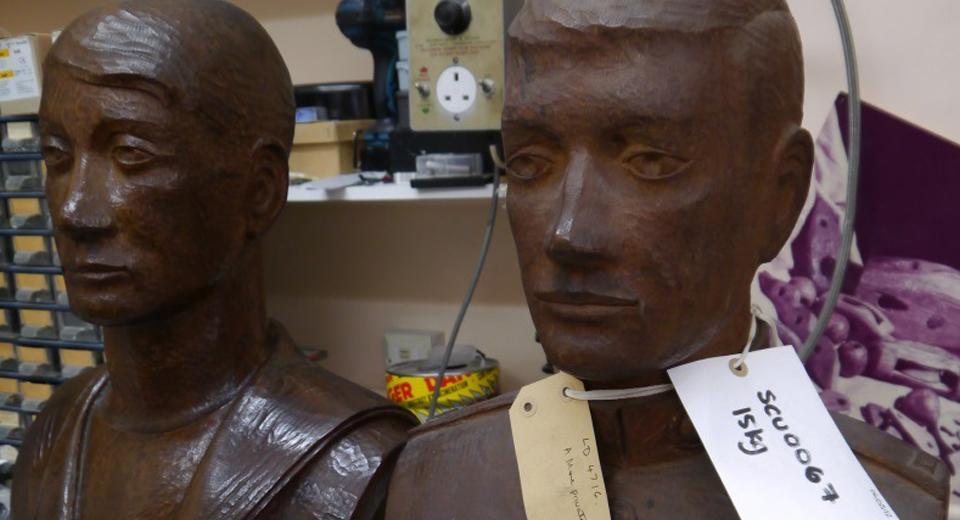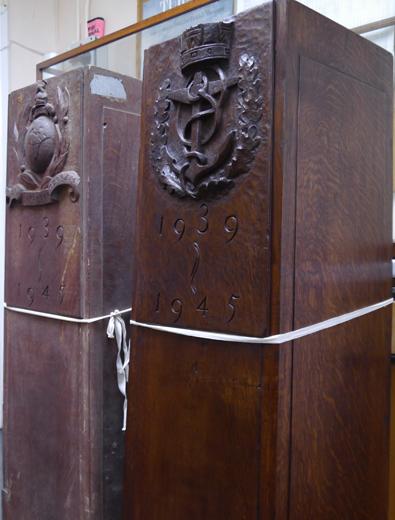11 Nov 2015
On Remembrance Day we look at the conservation of two memorial busts ‘intended to record the rank and file who have gained no mention or special distinction’.
“Many there be that have no memorial, whose righteous deeds shall not be forgotten”
This was the intended inscription that was to accompany these two carved oak busts, of an unknown Royal Navy rating and Royal Marine, who will pay tribute when the Queen’s House reopens.
Despite their relative youth, among our collection, time had still taken its toll on these two evocative carvings. Previous damage was repaired and their original lustre restored. The images below were taken during conservation to illustrate pre and post treatment.

However, it is the story behind the creation of these pieces that gives them a special resonance.
The sculptor, Major Alan L Durst, served as a Royal Marine, 1902-1913 & 1914 – 1918, and returned to the Local Defence Division of the Admiralty, 1940 – 1944. By this time Durst was an established carver of religious subjects, figures and animals, and a wood engraver who taught wood carving at the Royal College of Art.
During this latter period of war time service it was evident that Durst was missing the opportunity to carve and, having prepared initial models of these pieces, he approached the War Artists Advisory Committee (WAAC) with the idea for them in November 1942 and by early 1943 had been authorized to carve them for final submission.
In a letter to the Secretary of the WAAC of 20 February 1944 Durst informed him they were being sent with their stands to the National Gallery for submission, the inscriptions to be finalized if the works were approved. ‘The two heads’, he wrote, ‘are anonymous and are intended to record the rank and file who have gained no mention or special distinction – A quotation from the Book of Wisdom:- “Many there be that have no memorial, whose righteous deeds shall not be forgotten” might perhaps be introduced appropriately on the stands.’

This apt quote was never added to the plinths and the busts were first displayed at the National Gallery in late 1944. Durst did return to add the end date of the war which had been left open-ended. In this last correspondence to the WAAC Durst added: ‘I am back in my studio preparing to start life again as a sculptor. Four and a half years make a big break and I am grateful for having had the opportunity of carving the Sailor and Marine during the latter part of my time in the Service.’
These pieces are enigmatically tactile and that is testament to the hand that carved them.